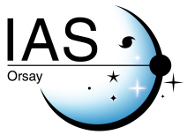The physics of the interstellar medium
The AMIS team brings together experts in observation and modelling who seek to understand the evolution of interstellar matter in galaxies, from diffuse envirWelcoonments to the dense regions where stars are formed. The team members obtain and use data using ground-based observations and from space in order to study the emission of the gas (molecular and atomic transitions) and dust in the interstellar medium. The work of the group was originally built around the analysis of space mission data (ISO, IRAS, Spitzer, Planck, Herschel, JWST), later developing an internationally-recognised expertise in data modelling, in particular concerning the emission and extinction of interstellar dust but also the emission of gas in photon dominated regions and the proto-planetary disks.
Main research themes:
- Nature and evolution of interstellar grains: understanding and characterising the evolution of grains from the diffuse interstellar medium to the dense regions of molecular clouds (coagulation, fragmentation by collisions or radiation), modelling of dust emission and extinction.
- Matter-radiation interaction in star-forming regions: understanding the impact of the radiation emitted by young stars on the structure of interstellar clouds, the associated stellar formation and the thermodynamic and chemical evolution of matter.
- Disc chemistry and dynamics: understand the chemical composition of internal discs (>10 au) where the majority of planets form and the dynamic processes such as disc winds that could play a decisive role in the accretion process and modify the migration of discs. planets.
- Gas physics, structure formation and galaxy evolution: understanding the physical processes involved in structure formation and diffuse matter evolution in galaxies (gravity, turbulence, thermal instability, stellar feedback).
- Polarisation and magnetic field: studying the properties of the interstellar magnetic field and understanding its role in the structuring of matter, modelling polarised dust emission in the context of galactic foregrounds for the study of CMB polarisation, in particular the B modes.



